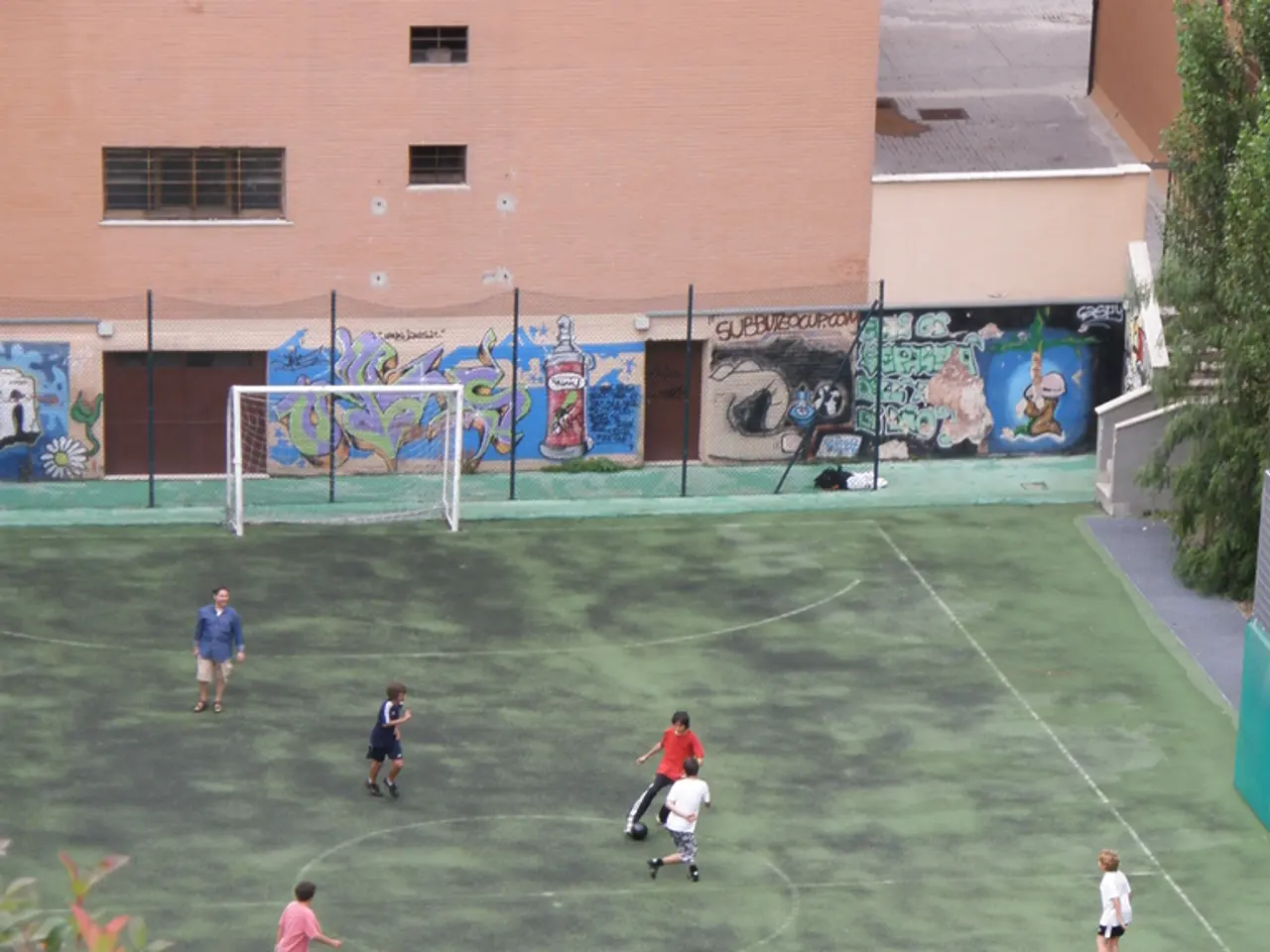Struggling to verbally communicate, migrant children find solace in artistic expression and play.
In the heart of Mexico City, a vibrant and poignant transformation is taking place. Amidst the hustle and bustle, a group of migrant children, hailing from various regions, are finding solace and healing through art and play.
The Darien Gap, a treacherous stretch of land connecting Central and South America, has become a common route for these migrants. The journey is fraught with dangers such as predator animals, scarce food, violence, robberies, and sexual assault. Yet, on the other side, there is hope.
Arturo Ortiz, a psychology research professor and an advocate for children in migrant camps in Mexico, is at the forefront of this initiative. He started an informal "school" for migrant kids at the Plaza Giordano, providing them with a safe space to learn and express themselves.
One such child is Joyce Zangilu, a 13-year-old Angolan migrant confined to the Plaza Soledad migrant camp. She finds solace in borrowing her friend's phone to play music, particularly angsty American popstars like Billie Eilish and Olivia Rodrigo. But it's not just music that helps her cope. The art classes, led by Ortiz, offer her a chance to process her experiences and find a sense of agency.
The art created by these children is a testament to their resilience. Hope is a recurrent theme among them, as seen in their drawings of imagined future homes in the United States. One drawing, in particular, catches the eye - a perpetually frowning Haitian toddler named Mateo, who would brighten up when given toys to play with.
Ortiz's students engage in play therapy nearly every Saturday, using art, games, and toys as powerful tools to address the mental health and trauma of these migrant youth. Research shows that play therapy and art therapy are crucial for child development and can help children process complex trauma.
This approach is not unique to Ortiz. Doctors Without Borders, a humanitarian organisation, uses play when visiting migrant camps in Mexico City for similar reasons. Even George Eisen, professor emeritus of history, wrote a book about play during the Holocaust, documenting how Jewish children played make-believe games that mimicked their reality.
During Mexico's Children's Day, Contreras held a public art exhibition of the kids' work, allowing them to express their humanity and feel a sense of agency. The exhibition was held across the street from his apartment, at Plaza Giordano Bruno, known for housing hundreds of Haitian and Central and South American migrants waiting for a United States immigration appointment.
The journey through the Darien Gap may be fraught with danger, but the hope and resilience of these migrant children are a testament to the human spirit. Through art and play, they are finding a way to heal and move forward, one drawing, one game at a time.
Read also:
- Peptide YY (PYY): Exploring its Role in Appetite Suppression, Intestinal Health, and Cognitive Links
- Toddler Health: Rotavirus Signs, Origins, and Potential Complications
- Digestive issues and heart discomfort: Root causes and associated health conditions
- House Infernos: Deadly Hazards Surpassing the Flames








